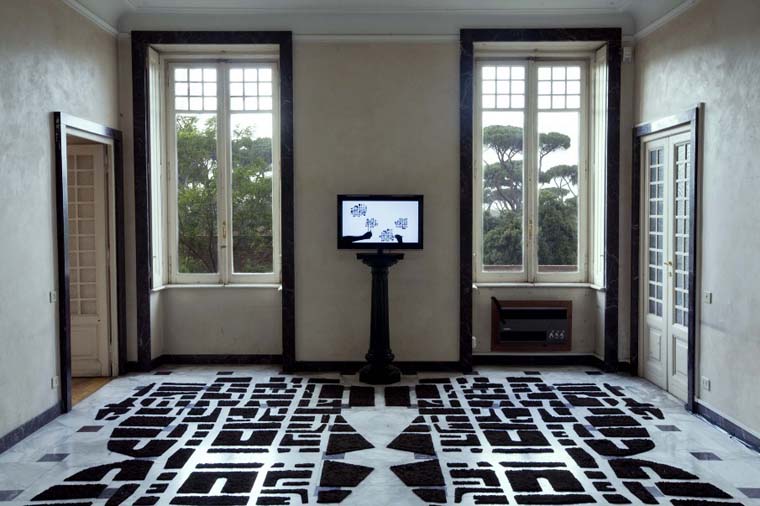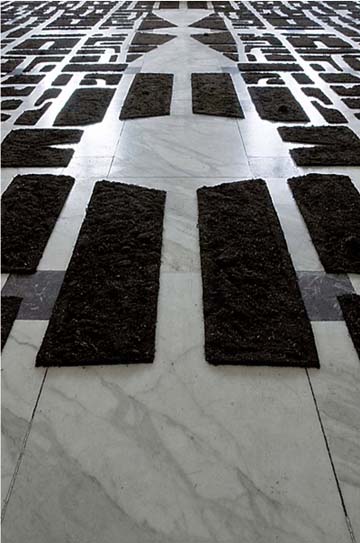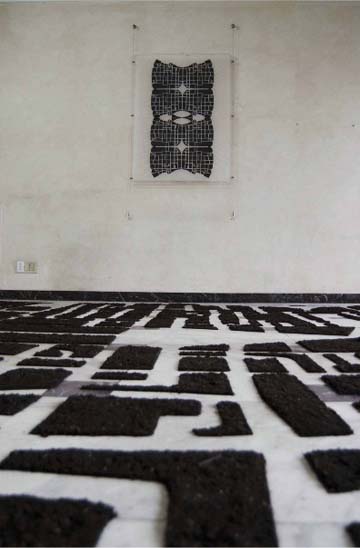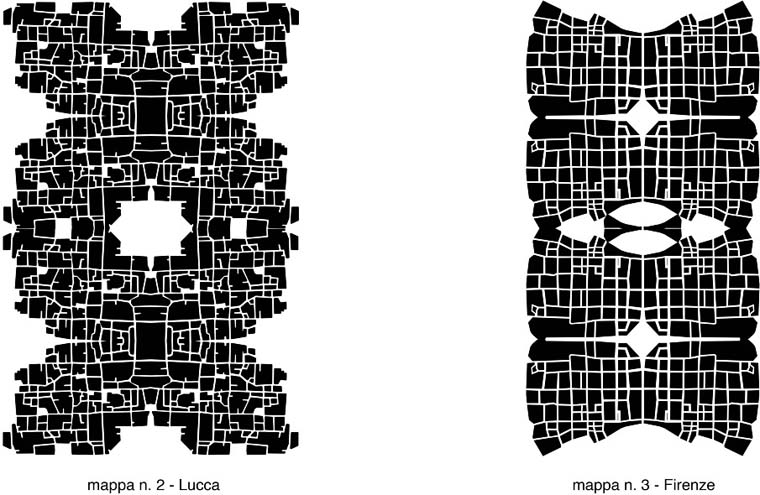Panzetti, Ginevra
Mappamondo / 2012
The installation is composed of four different maps. One is made of soil; it extends from the floor to encompass the entirety of the room, two are printed on tracing paper and the third is a video piece of seven hours, in which the creation process is documented.
The matrix of the maps have been extracted from topographical maps of Italian cities, precisely, the parts of the cities in which the urban structure of the Castrum can be found. The ‚Castrum‘, a constitutive element of Rome’s territorial occupation and colonization strategy lends its name from the Roman military camp. This urban structure, in the Hippodamian Greek model, represents a trace of an effective territorial organization method that was refined within Roman culture, to a rigorous science of occupation and expansion. The matrix of the extracted topographic map is repeated and symmetrically composed according to a scheme that relates to the aesthetics of ornamentation. The ornament-map collection, no longer a contingent of scientific and exact functionality, is rather a representation that describes not the real and existing geographic space, but the propagation of an obsessive urban ideology that literally extends the project of transformation, spatial expansion and standards of conquest into space.




Megallò Busz & Petronell Schloss
Megallò Busz and Petronell Schloss are two works of a series called Vienna-Budapest, a project developed along a bike route that connects the two capitals.
PETRONELL SCHLOSS
The two visitors explore the place by following the limits of the room determined by the architectural base ground. The step adheres to the architectural ground plan, with the rigour of an executor. The occupation of the place, lasts as long as the length of the base construction needs to be secluded, becoming itself a passage instead.
MEGALLO BUSZ
The two bodies are settled in different places with precise limits, that lack just one wall to be closed spaces. The occupation acquires just a formal character, privileging the composition and eluding a possible functional relation with the place. The bodies dispose themselves like figures – or furniture.
UNTITLED
The clothing applied to the body, serve as an aesthetic composition which moves away from its function; it recreates a new relation of anatomical conformity.
Vita
* 1985 in Rome, Italy
Education
2010 Studies in Media Arts, HGB Academy of Visual Arts, Leipzig, Germany
2009 Diploma in Set-Design for Theatre in The Academy of Fine Arts, Rome
2007-2008 Rhythmic Movement and Philosophy School “Stoa” held by Claudia Castellucci, Societas Raffaelo Sanzio. Cesena, Italy
Shows
2009 partecipated in Simiam Videbo,(Stoa), CRT teatro dell’arte, Milano and Comandini Theater, Cesena Italy
2008 Area, (in collaboration with Enrico Ticconi) festival di Santarcangelo (invited by Dewey Dell), Santarcangelo, Italy
Exibitions
2007 Kantine, (in collaboration with Washo Valenzuela and Marie Kirchner) group exibition, Ostrale, Dresden, Germany